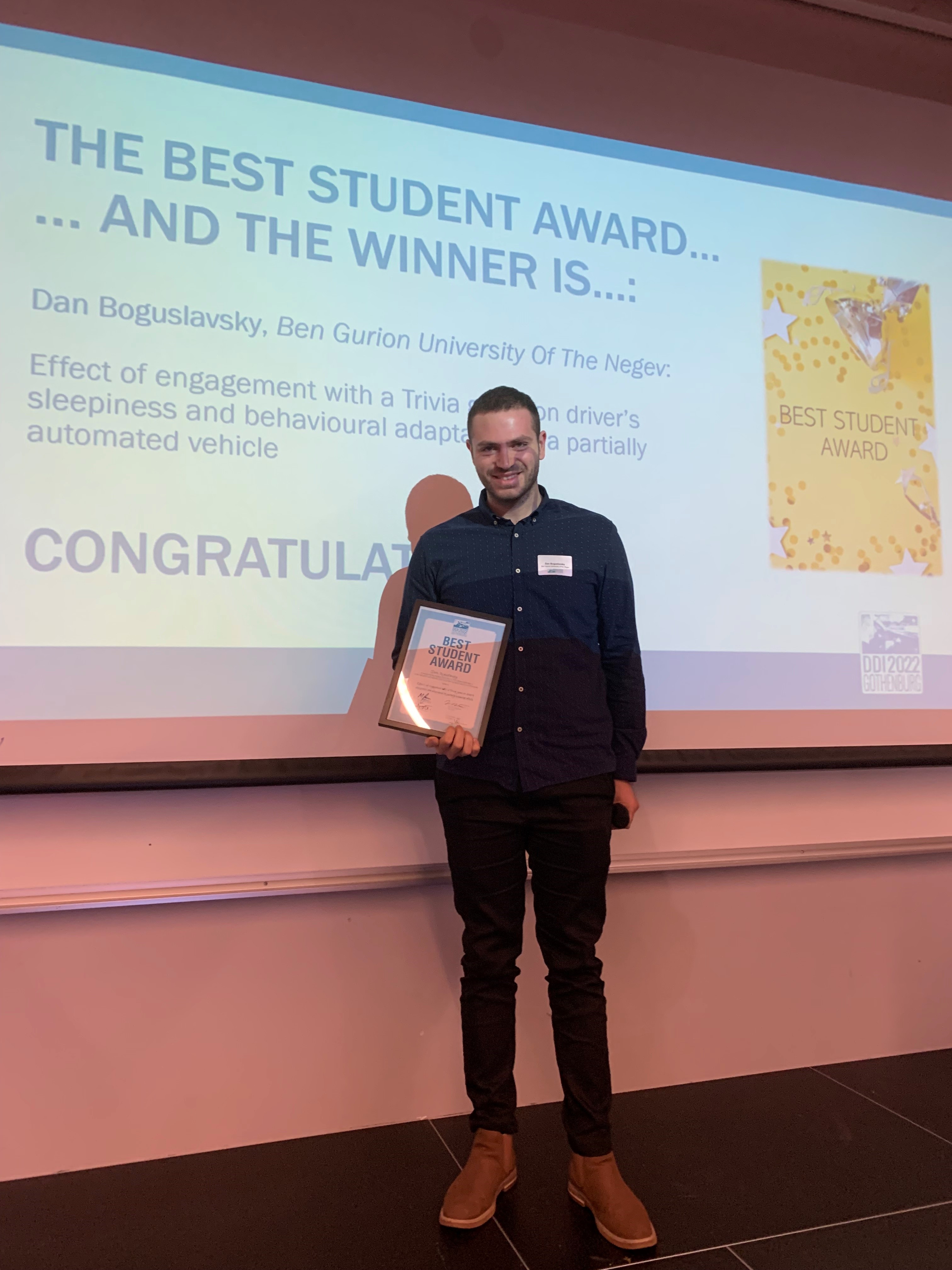Best student award to Dan Boguslavsky at DDI2022
The Best Student Award at the 8th edition of the International Conference on Driver Distraction and Inattention (DDI2222) was given to Dan Boguslavsky, Ben Gurion University Of The Negev, for the best combined presentation and research. His presentation was titled “Effect of engagement with a Trivia game on driver’s sleepiness and behavioural adaptation in a partially automated vehicle”.
The other nominated students were Gaëtan Perrotte, Stellantis, with his work “Body posture and physiological indicators for drowsiness detection in a partial automated driving” and Pierluigi Olleja, Chalmers University of Technology, with his work “Quantification of driver’s side-glance frequency and duration in straight highway driving”.
Congratulations to Dan – we wish you all the best in your future career!
Effect of engagement with a Trivia game on driver’s sleepiness and behavioural adaptation in a partially automated vehicle
The objective of this study was to use a driving simulator to examine whether the utilization of an activating non-driving related task (NDRT) as a countermeasure can mitigate the effects of passive fatigue development and hazard perception (HP) deterioration under partially automated driving (PAD). Twenty-four participants were randomly assigned to one of two experimental conditions: (1) driving under PAD conditions without an activating NDRT or (2) driving under PAD conditions in the presence of an activating NDRT. The activating NDRT was a multimodal version of a Trivia game (auditory and visual). Each condition included two driving sessions one week apart. Each driving session included four unmaterialized hazardous situations (8 total) counterbalanced between participants. Participants were connected to an eye-tracking system and ECG throughout their drives. In addition, they were asked to rate their subjective level of sleepiness (KSS) four times during each drive. Initial findings show that the progression of subjective sleepiness is slower when drivers can engage with an activating NDRT than when they are not. This effect dissipates as drivers gain experience with the system.
You can access Dan’s full abstract and presentation in the info menu.

